User Manual
Marshall Plexi Super Lead 1959
Intro
The amplifier
The speaker cabinet
The microphones
The Amplifier panel controls
The Input configurations
The Channel Strip panel
Cabinet and microphones
Marshall Plexi Super Lead 1959 in Amp Room
Extended Features
Credits
Related manuals
It is impossible to exaggerate the iconic status of the Marshall Plexi Super Lead 1959 amplifier. Jimi Hendrix, Pete Townshend, Eric Clapton, Angus Young, Eddie Van Halen, Yngwie Malmsteen – the list of Plexi users is a veritable who’s who of rock 'n' roll history. Forget all stereotypes about British reserved manners and stiff upper lips. The Plexi is brash, rude, and gives you the instantly recognizable sound of rock 'n' roll rebellion.
This plugin is a “what you see is what you get” product. You should be able to intuitively learn to use it within minutes, so that you can work fast and efficiently with it.
Softube has worked closely with Marshall’s product experts and legendary recording engineer Tony Platt – who engineered AC/DC’s Highway to Hell and Back in Black – to ensure that the Plexi was captured in the best possible manner. The result is this plugin that allow computer-based musicians to enjoy a legendary Marshall stack without getting evicted.
The particular amplifier that Softube modeled is not just any Marshall Plexi. In the making of this plugin, Softube worked closely with Marshall’s product expert Chris George, who lent us this amp from Marshall’s own reference collection.
This very amp, built in 1967 and kept in pristine shape (at least on the inside) by Marshall’s technical staff, is Marshall’s own reference to how a Plexi should sound.
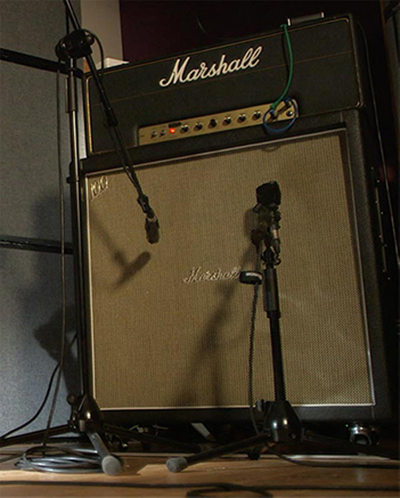
The goal for this plugin was to capture how the Plexi sounded when it was new back in 1967 – to get the sound Jim Marshall himself intended.
To capture the typical late sixties tone, Tony and Chris – after much testing at Marshall headquarters – chose to use a straight 1960BHW 4x12 inch speaker cabinet, loaded with Celestion G12H-30’s. These are relatively low wattage speakers, similar to those used at the time, which will saturate more easily compared to modern constructions. This adds a lot of character to the end result.
The particular speakers in this cabinet were not from the sixties. Speakers that have spent nearly 50 years reproducing the sound of 100 watt guitar amplifiers, will have deteriorated and give a much different sound compared to what was intended. The speakers used had however been well broken in to reach their full potential and liveliness.
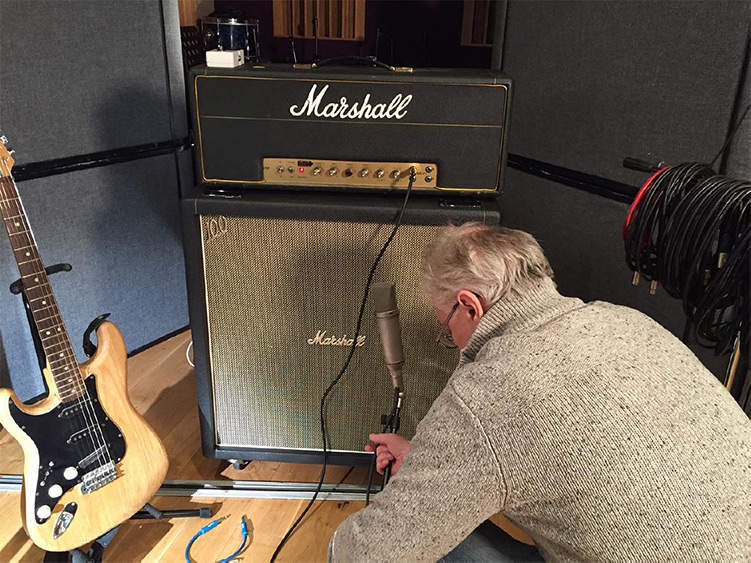
Tony chose to make three different setups with three microphones in each – two close mics and one room mic.
Clicking on the Channel Strip sticker on the right side, gives you access the control panel. Here you can select between the three sets of microphones and adjust their individual levels and panning. The settings are named FET, Valve and Dynamic to indicate what microphone types were used.
The knobs

Presence: Increases the amount of presence – a treble boost accomplished by reducing the amount of high frequencies being subjected to negative feedback in the power amp section.
Bass, Middle, and Treble: These tone controls determine the frequency content from the amplifier.
Volume I: Controls the volume of the brighter sounding Input I.
Volume II: Controls the volume of the darker sounding Input II.
Please note: Clicking above the tone and volume controls resets the corresponding knob to its 12 o’clock position.
The inputs
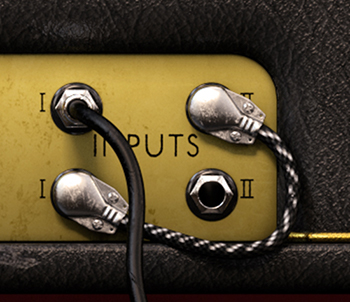
The two Input I sockets provide a bright sound, and the Input II sockets have a darker sound.
The lower two sockets have a lower gain (–6 decibel) than the upper inputs.
Patch switching
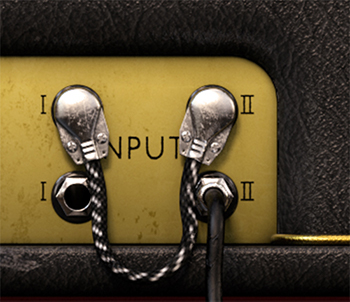
There are numerous combinations of the high and low gain inputs for Input I and Input II. You can access those variations by clicking on the input sockets.
Clicking one of the four inputs selects it as the main input from the guitar (black cable). Clicking the selected guitar input again rotates between the available patching patterns (with the short black/white fabric-covered patch cable).
By patching the inputs, you will get different input gain and different tonality from the amp. Input II is very dark sounding, and by combining it with Input I you can work the Volume knobs almost like an EQ.
The most common way of patching is going into Input I at the top, and patching from the low Input I to the top Input II, but feel free to experiment!
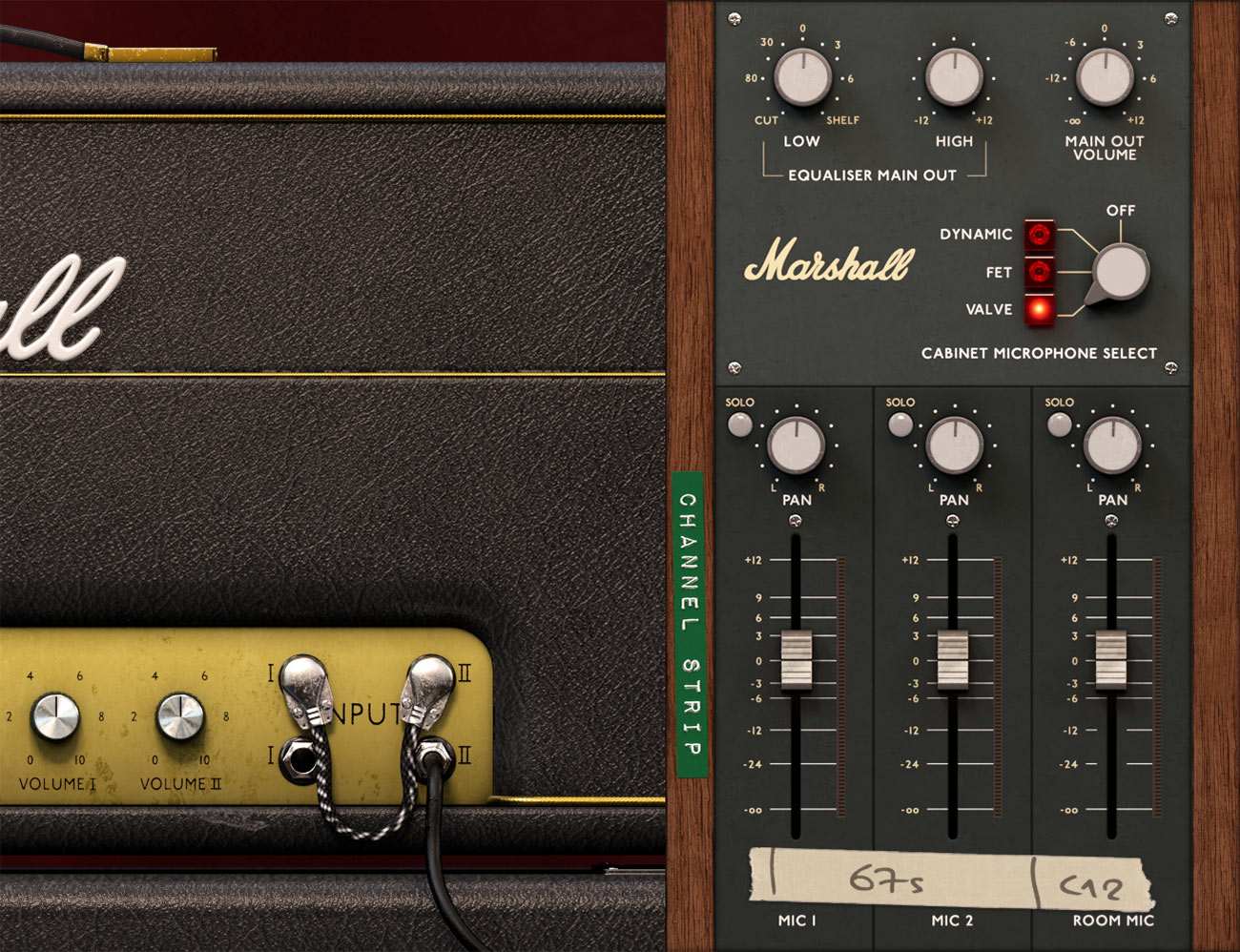
Click here to view the full-sized image in a new tab
Clicking on the Channel Strip sticker on the right side takes you to a set of controls. Here you can fine-tune microphone selection, level, panning, and more.
Equaliser and Volume Main Out
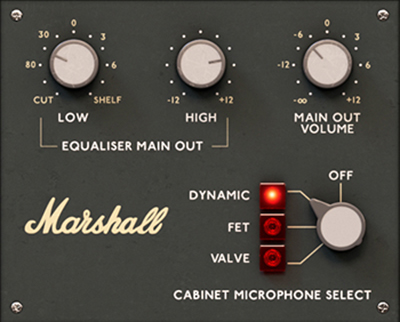
Low: Neutral/bypass in the 12 o’clock setting. Turning clockwise boosts the low end with a shelving filter. Turning counterclockwise cuts the low end with a low cut (high pass) filter.
High: Neutral/bypass in the 12 o’clock position. Turning the knob clockwise boosts the treble with a shelving filter. Turning it counterclockwise cuts the treble, also with a shelving filter.
Volume: Adjusts the output volume for the entire plug-in.
Cabinet Microphone Select
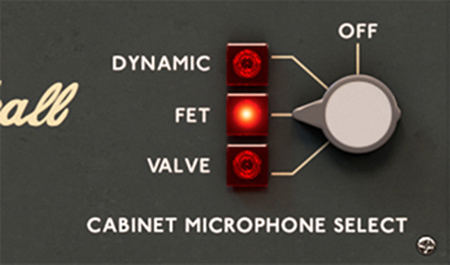
Here you can select which set of microphones to use. See description in the next section.
Microphone mixer
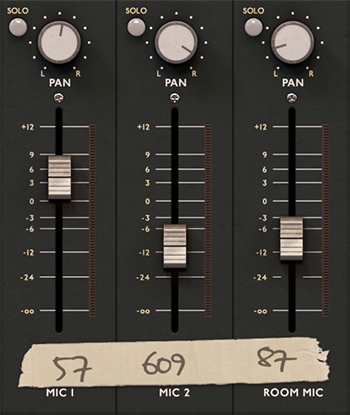
Solo: Press this button to listen to only one microphone. Hold down Shift to select several mics.
Pan: Places the microphone channel in the desired position in the stereo panorama.
Channel faders: Adjust the volume of the respective microphone channels.
The 16 ohm Marshall 1960 BHW cabinet was recorded with a legendary range of microphones, all carefully selected to give a wide variety of tones, and carefully positioned to sound fantastic when used in combination with each other.
Valve microphones
A thick and solid sound, with a slightly rounded top.
Mic 1: Neumann U 67 (cardioid, –10 dB pad activated)
Mic 2: Neumann U 67 (cardioid, –10 dB pad activated)
Room mic: AKG C12
FET microphones
A slightly more open sound with lots of ambience from the room mic.
Mic 1: Josephson E22
Mic 2: Neumann U 87 (cardioid, –10dB pad activated)
Room mic: Coles 4038
Dynamic microphones
Typical dynamic sound with a solid low mid-range from the 57 and aggressive top from the 609.
Mic 1: Shure SM57
Mic 2: Sennheiser E609
Room mic: Neumann U 87 (omni)
Off (no cabinet or microphone)
In this position, the cabinet and microphone emulations are bypassed, so that only the direct sound from the Marshall Plexi amplifier head is heard. This setting is useful when combining this amp with other cabinet/microphone models.
These include the Softube Bass Amp Room (including 8x10), Metal Amp Room and Vintage Amp Room (including Half Stack).
In all these plugins, the amplifier section can be bypassed. This would be the recommended setting, when combining the Marshall Plexi Super Lead 1959 with the cabinets in either of those plugins.

Marshall Plexi Super Lead 1959 in Amp Room
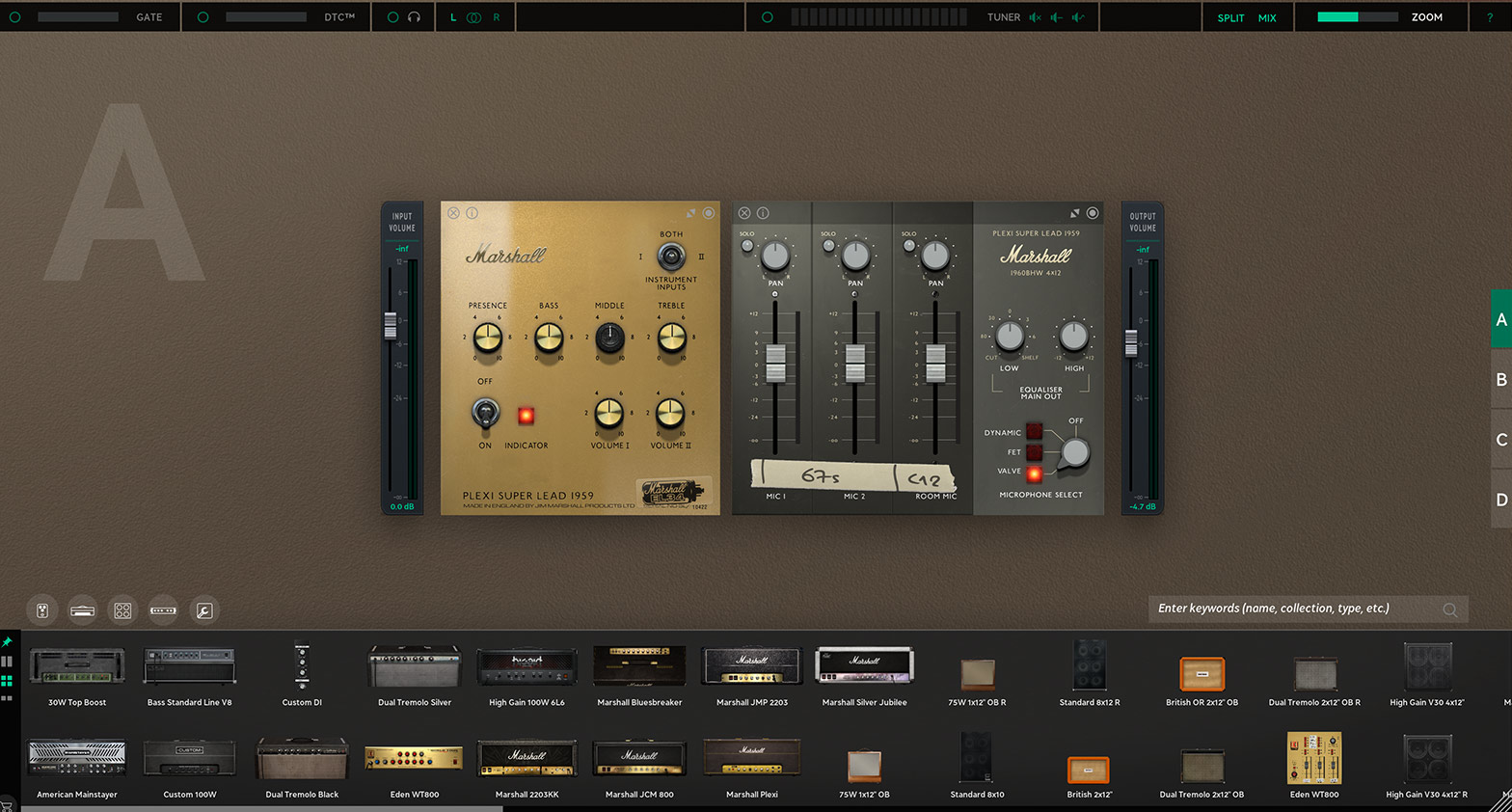
When purchasing this product, you automatically gain access to running the plugin as modules inside the Amp Room platform. The amp and cab sections are divided into two separate Amp Room modules so they can be matched and arranged together with any other native Amp Room module or other Amp Room-ready modules that you might own.
A whole range of added control can be accessed with Extended Features. Please see the separate "Extended Features" manual for more information.
Patrik Jensen – Project management
Henrik Andersson Vogel – Project management, manual and marketing
Niklas Odelholm – Product design, cabinet modeling, graphic design, presets
Arvid Rosén – Amp modeling
Oscar Öberg – Power amp modeling
Kim Larsson and Mattias Olsson – Additional DSP modeling
Tony Platt – Sound design and presets
Chris George – Marshall expert, sound design and presets
Patrik Holmström and Torsten Gatu – Framework programming
Pelle Serander – Framework
Ulf Ekelöf – 3D graphics
Erik Hampusgård – Configurations and building
Paul Shyrinskykh and Emanuel Enbäre – Quality assurance
Sven Bornemark – Manual copywriter